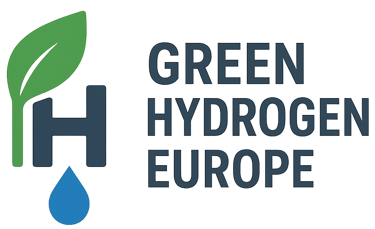Green Hydrogen Insights
What is green hydrogen?
Green hydrogen is hydrogen produced by splitting water into hydrogen and oxygen using renewable electricity. Unlike grey hydrogen made from natural gas, green hydrogen is produced with zero CO₂ emissions.
How is it produced?
Renewable energy from solar or wind powers an electrolyzer. The electrolyzer separates water into hydrogen and oxygen. The hydrogen is captured as a clean fuel, while oxygen is released as a harmless by-product.
Why is it important?
Green hydrogen is a clean and versatile energy carrier. It can be used in transport, heavy industry, power generation, and as a raw material for chemicals and fuels. It replaces fossil fuels and reduces greenhouse gas emissions.
What is the market potential?
The global hydrogen economy is projected to grow into a market worth hundreds of billions of euros by 2050. The European Union aims to import 10 million tons of green hydrogen per year by 2030, making projects like ours essential.
What role will it play in the future?
Green hydrogen will power trucks, trains, and ships, fuel industrial processes like steel and cement, balance renewable electricity systems, and provide the foundation for new fuels like green ammonia. It is central to the world’s clean energy transition.
What are the environmental benefits?
Green hydrogen reduces carbon emissions, promotes energy independence, and supports the transition to a sustainable economy.
Green Ammonia Insights
Green ammonia is ammonia produced from green hydrogen and nitrogen using renewable energy. Unlike conventional ammonia, which is made from fossil fuels and emits large amounts of CO₂, green ammonia is produced with zero carbon emissions.
First, renewable electricity powers electrolysis to split water into hydrogen and oxygen. Then nitrogen is separated from the air. Finally, hydrogen and nitrogen are combined in the Haber-Bosch process to form ammonia.
What is Green Ammonia?
Green ammonia is essential for the energy transition. It is an efficient way to store and transport hydrogen across long distances. It is also one of the most promising future fuels for the shipping industry, and it can replace conventional fertilizers in agriculture with a sustainable alternative.
What is the market potential?
The global demand for ammonia is already more than 180 million tons per year. As industries and governments move toward net zero, green ammonia will become a strategic commodity for energy, shipping, and farming.
What role will it play in the future?
Green ammonia will power ships, support agriculture, enable hydrogen trade, and reduce millions of tons of CO₂ emissions worldwide. It is not just a chemical product but a key solution for a cleaner global economy.
What are the environmental benefits?
Green hydrogen reduces carbon emissions, promotes energy independence, and supports the transition to a sustainable economy.
How is it produced?
Why is it important?
Contacts
office@greenhydrogeneu.com
© 2025. All rights reserved.
